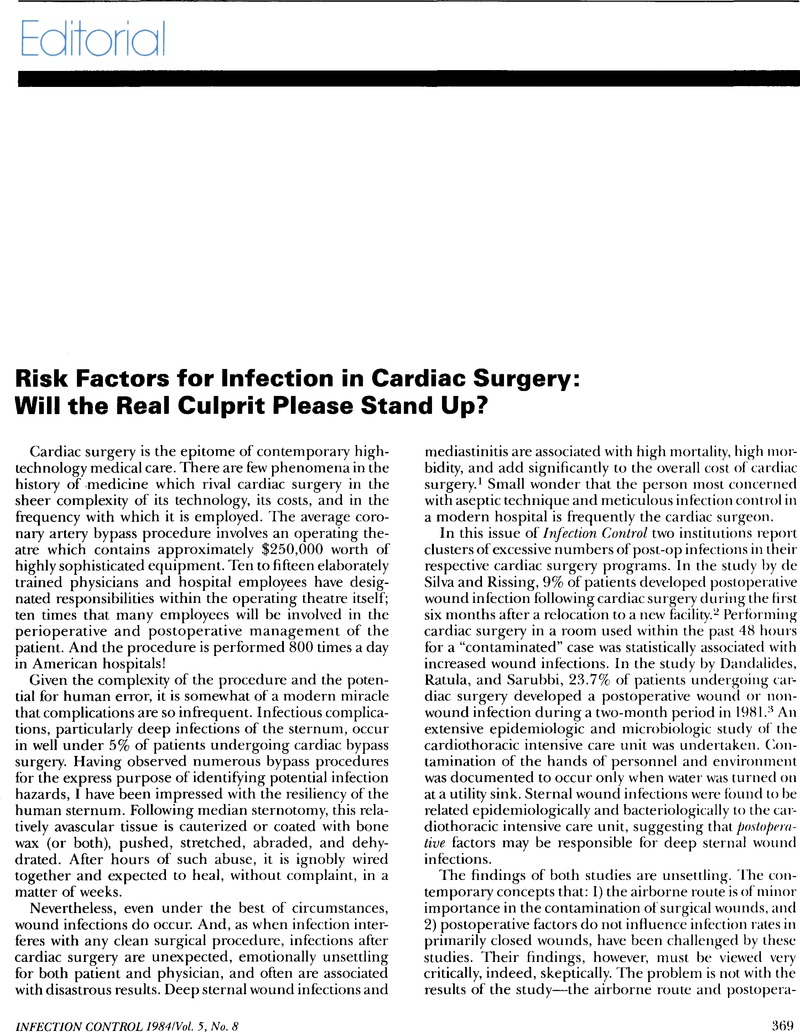Crossref Citations
This article has been cited by the following publications. This list is generated based on data provided by Crossref.
Kaiser, Allen B.
1985.
Allen B. Kaiser, MD, was invited to respond to Dr. Spatter's letter.
Infection Control,
Vol. 6,
Issue. 4,
p.
138.
Sellick, John A.
Stelmach, Marie
and
Mylotte, Joseph M.
1991.
Surveillance of Surgical Wound Infections Following Open Heart Surgery.
Infection Control & Hospital Epidemiology,
Vol. 12,
Issue. 10,
p.
591.
Rebollo, M.Henar
Bernal, José M.
Llorca, Javier
Rabasa, José M.
and
Revuelta, José M.
1996.
Nosocomial infections in patients having cardiovascular operations: A multivariate analysis of risk factors.
The Journal of Thoracic and Cardiovascular Surgery,
Vol. 112,
Issue. 4,
p.
908.
Roy, Marie-Claude
1998.
Surgical-Site Infections After Coronary Artery Bypass Graft Surgery: Discriminating Site-Specific Risk Factors to Improve Prevention Efforts.
Infection Control & Hospital Epidemiology,
Vol. 19,
Issue. 4,
p.
229.
Roy, Marie-Claude
1998.
Surgical-Site Infections After Coronary Artery Bypass Graft Surgery: Discriminating Site-Specific Risk Factors to Improve Prevention Efforts.
Infection Control & Hospital Epidemiology,
Vol. 19,
Issue. 4,
p.
229.
Roy, Marie-Claude
1998.
Surgical-Site Infections After Coronary Artery Bypass Graft Surgery: Discriminating Site-Specific Risk Factors to Improve Prevention Efforts.
Infection Control & Hospital Epidemiology,
Vol. 19,
Issue. 4,
p.
229.



